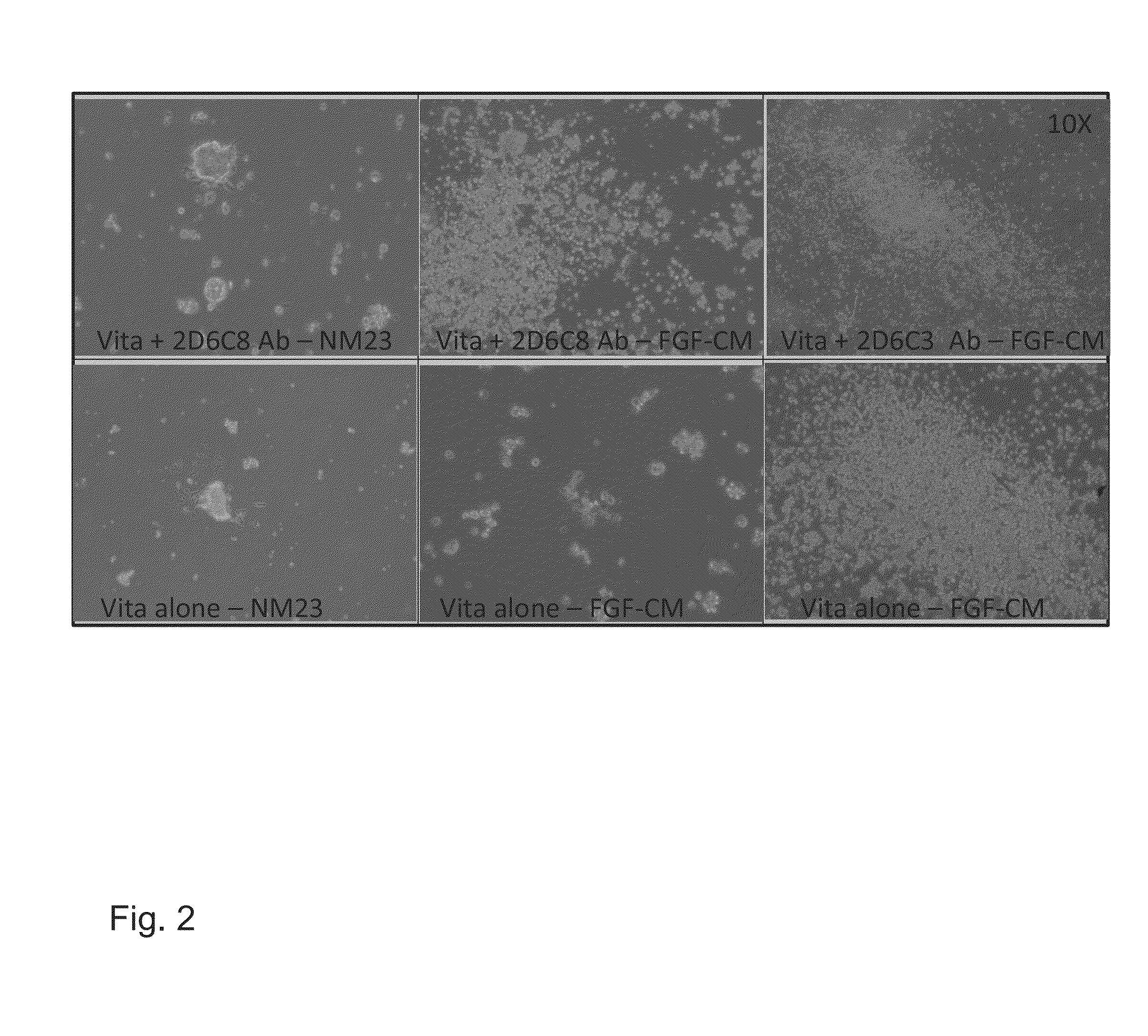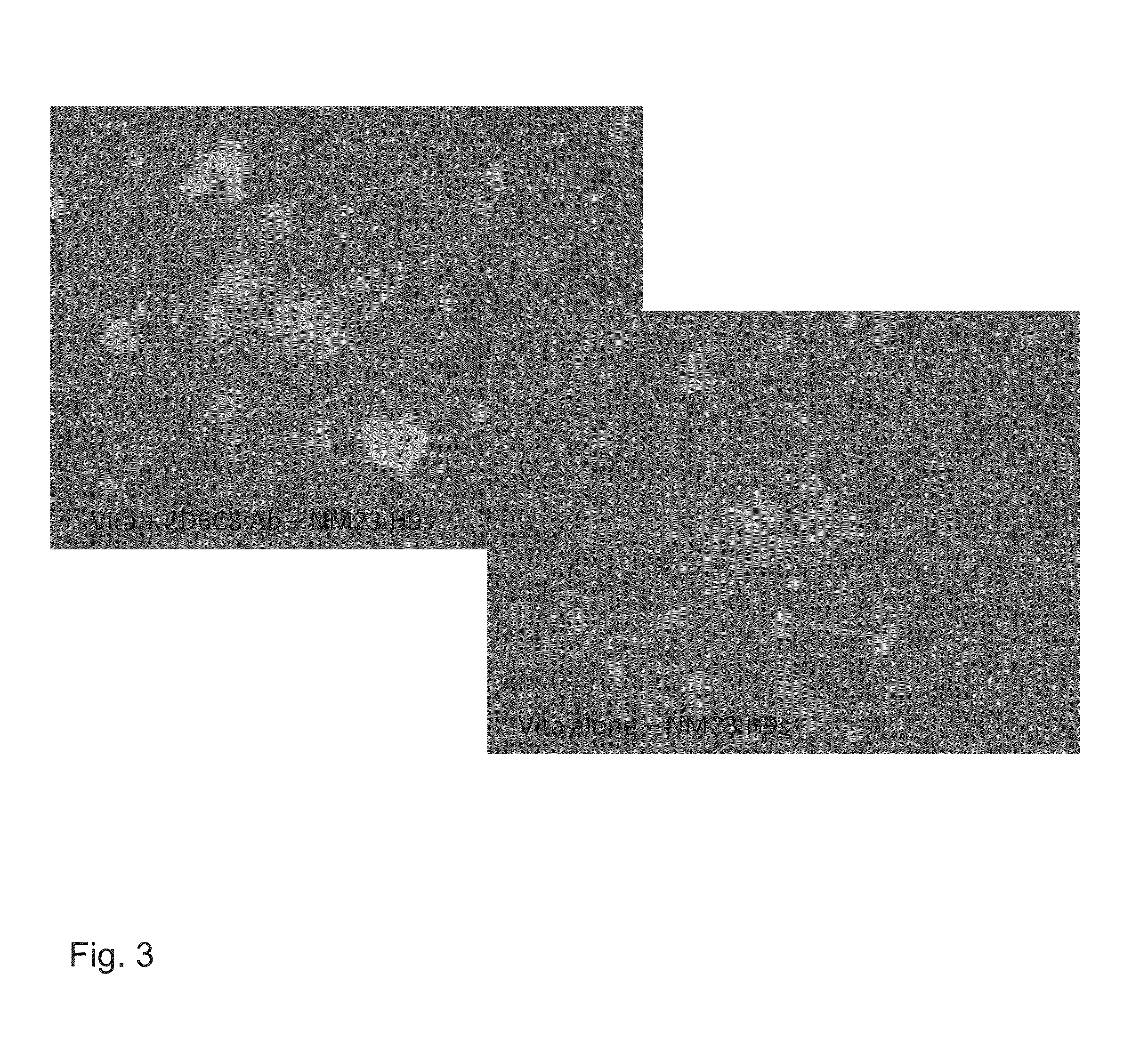Method for making pluripotent stem cells
a technology of stem cells and cells, applied in the field of making pluripotent stem cells, can solve the problems of not being defined or xeno, stem cells must adapt gradually, and the mixture of components is not desirable, so as to facilitate cell attachment
- Summary
- Abstract
- Description
- Claims
- Application Information
AI Technical Summary
Benefits of technology
Problems solved by technology
Method used
Image
Examples
example 1.1
Stem Cell Minimal Media “MM”
[0174]Minimal Medium (“MM”) 500 mL includes the following: 400 ml DME / F12 / GlutaMAX I (Invitrogen #10565-018), 100 ml Knockout Serum Replacement (Invitrogen#10828-028), 5 ml 100×MEM Non-essential Amino Acid Solution (Invitrogen#11140-050), 0.9 ml (0.1 mM) beta-mercaptoethanol (55 mM stock, Invitrogen#21985-023), and optionally may contain 2.5 ml PSA (penicillin, streptomycin, amphotericin) MP Biochem (#1674049) for minimizing contamination risk.
example 1.2
Stem Cell Defined Media—“MN6”
[0175]The 6-component minimal media, “MN6” consists of DMEM / F12 / GlutaMAX or similar base media suitable for cell culture, supplemented with 1% non-essential amino acids, 64 mg / L ascorbic acid (Sigma), 14 ug / L sodium selenium (Sigma), 19.4 mg / L insulin (Sigma), 543 mg / L sodium bicarbonate (Sigma) and 10.7 mg / L transferrin (Sigma).
example 1.3
Polyclonal Anti-MUC1* Antibodies that Facilitate Stem Cell Attachment to Surfaces Coated with the Antibody
[0176]Rabbit polyclonal antibodies were generated by immunizing animals with the Primary Sequence of the MUC1 Growth Factor Receptor (PSMGFR) peptide. Sera was collected according to standard methods and then purified over an affinity column to which was bound either the PSMGFR peptide or a PSMGFR peptide missing the last ten (10) C-terminal amino acids, “C-10 peptide”. The purified antibodies (SDIX-anti-FLR and SDIX-anti-C-10, respectively) were then coated directly onto plastic cell culture plates (Vita plates, ThermoFisher; or BD Falcon #353046) and shown to facilitate stem cell attachment. To coat surfaces with the antibody, concentrations between 1 μg / mL and 300 ug / mL in a volume of PBS that allowed for complete surface coverage was incubated at 4 degrees C. overnight or at room temperature for approximately 3 hours. Human stem cells bound to these anti-PSMGFR surfaces and ...
PUM
| Property | Measurement | Unit |
|---|---|---|
| contact angle | aaaaa | aaaaa |
| volume | aaaaa | aaaaa |
| concentration | aaaaa | aaaaa |
Abstract
Description
Claims
Application Information
 Login to View More
Login to View More - R&D
- Intellectual Property
- Life Sciences
- Materials
- Tech Scout
- Unparalleled Data Quality
- Higher Quality Content
- 60% Fewer Hallucinations
Browse by: Latest US Patents, China's latest patents, Technical Efficacy Thesaurus, Application Domain, Technology Topic, Popular Technical Reports.
© 2025 PatSnap. All rights reserved.Legal|Privacy policy|Modern Slavery Act Transparency Statement|Sitemap|About US| Contact US: help@patsnap.com



